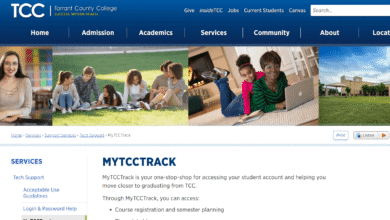What Google Really Wants in 2025: A Technical SEO Checklist

Google’s 2025 technical SEO requirements focus on core web vitals, efficient crawl control, and streamlined indexing processes that directly impact your search rankings.
The search giant has made it clear that technical performance drives user experience, and user experience drives rankings. Sites that load fast, crawl efficiently, and index properly get rewarded, while sites that don’t get buried.
Our team at Matter Solutions helps businesses tackle these technical requirements without getting lost in the weeds of code and configuration.
In this modern SEO checklist, we’ll walk through exactly what Google wants to see in 2025:
- Core Web Vitals optimisation for speed and user experience
- Schema markup and structured data for rich snippets
- E-E-A-T signals and strategic link building for authority
- Proactive technical audits and server-side rendering optimisation
Let’s dive into what counts for your technical SEO success this year.
Core Web Vitals in 2025: A User-First Approach

The core web vitals for your website’s success in 2025 are Largest Contentful Paint (LCP), Interaction to Next Paint (INP) and Cumulative Layout Shift (CLS).
These three metrics determine how Google evaluates your site’s user experience and directly influence your search rankings. In our experience, sites that optimise these metrics see measurable improvements in both search visibility and user engagement.
Here’s what you need to know about each metric and how to optimise them for better rankings:
The Evolving Metrics: LCP, INP, and CLS
Google’s core web vitals LCP, INP and CLS directly impact how Google measures user experience and determine your page’s ranking potential. LCP measures loading speed, INP tracks how quickly your site responds to user interactions, and CLS prevents those annoying layout jumps that frustrate visitors.
The most significant change happened in March 2024 when Google introduced Interaction to Next Paint (INP) as the newest Core Web Vital, replacing First Input Delay (FID). This shift means your technical SEO checklist must now focus on overall responsiveness throughout the user’s entire session, not just that first click.
Auditing Your Website with Google Search Console
Once you understand the metrics, the next step involves checking your current performance. The Core Web Vitals report in Search Console shows you how your website is performing based on field data collected from real users, which is the exact data Google uses for ranking
The benefit of using Google Search Console is clear: you get authentic user data rather than simulated tests. When you access this data, it tells you exactly what your visitors experience when they browse your site. So you can easily identify performance issues that might be hurting your rankings.
Optimising for a Faster and More Stable Experience
Your website should be optimised for speed, responsiveness and visual stability to create the best possible user experience. When you focus on improving Core Web Vitals, the optimisation process involves several basic strategies:
- Compress and optimise images for faster loading
- Minimise third-party scripts and plugins
- Enable browser caching for repeat visitors
- Focus on mobile-friendly optimisation (if you do this, 79% of people will revisit!)
These tactics improve your page speed while helping search engines understand your content structure. The connection between these improvements and your rankings becomes clear when you see how they affect user behaviour.
Now that your Core Web Vitals foundation is solid, you need to tackle the next layer of technical requirements. Let’s explore how crawl control strategies can maximise your search visibility.
Beyond the Vitals: Building Foundational Authority

While Core Web Vitals handle speed, link building and schema markup are what build trust and authority. Together, these elements signal to Google that your website deserves to rank higher than your competitors. The reason this combination works is that technical performance alone won’t get you to the top of search results.
Here’s how to build the trust signals that separate ranking websites from those that disappear into Google’s depths:
The Power of Structured Data and Schema Markup
Structured data and schema markup let you communicate directly with search engines about your content’s meaning and context. This enhanced communication helps search engines understand your data structure and display rich snippets in search results.
The benefit becomes clear when you realise that search engine crawlers can process your web page more effectively when you provide clear markup guidelines. Google even uses Rotten Tomatoes’ example of a 25% higher click-through rate to discuss the importance of structured data.
Besides, schema markup changes how Google presents your target keywords in search results, which gives you a competitive edge over sites that rely on basic HTML alone. Think of it as giving Google a cheat sheet for your content, except this time cheating is totally legal and encouraged.
Helpful Tip: Start with the most common schema types like Article, Product, or LocalBusiness. These deliver quick wins while you learn the system.
On-Page Optimisation for E-E-A-T
E-E-A-T (Experience, Expertise, Authoritativeness, Trust) is a basic concept that Google uses to evaluate content quality. Your SEO strategy needs to demonstrate these four pillars through concrete on-page elements.
The way you do this is by:
- Including transparent author bios
- Clear contact information
- Credentials that prove your expertise.
For instance, if your website covers health topics, you need medical professionals as authors with their qualifications clearly displayed. The same principle applies to financial advice, legal content or any topic that affects people’s well-being. When you add original research and quality content to support your claims, it strengthens your authority with both users and search engines.
Strategic Link Building and Link Audits
What’s the fastest way to build domain authority? The answer lies in strategic link building combined with regular link maintenance.
For most brands, backlinking and link building are the most impactful SEO tactics. Your SEO strategy should focus on earning links from relevant, authoritative websites in your industry. It works better than other methods as Google can tell the difference between earned authority and manufactured signals.
We suggest regularly checking for and fixing broken links on your website. In this way, your link profile stays healthy and preserves the ranking power you’ve earned.
Since technical SEO requirements constantly evolve with Google’s algorithm updates, you need a systematic approach to stay ahead. The next section provides your complete 2025 technical SEO checklist to ensure nothing falls through the cracks.
Staying Ahead of the Curve: The 2025 Technical SEO Checklist
The 2025 technical SEO checklist requires you to focus on proactive audits, server-side rendering, and continuous performance monitoring to stay ahead of your competitors.
We know how overwhelming it can feel when Google releases another algorithm update and your rankings suddenly drop overnight. However, if you follow a good approach, it protects you from most technical surprises and keeps your site performing well regardless of what changes Google throws your way.
Now let’s examine these two areas you need to monitor and optimise to maintain your competitive edge:
- Proactive Technical Audits and Analysis: After implementing your Core Web Vitals optimisations and authority-building strategies, regular technical SEO audits help you achieve that SEO success. With these audits, you catch issues before they impact your rankings. Also, when you use tools like Google Analytics to track user behaviour patterns, you can spot technical problems early and fix them before they hurt your search visibility.
- Server-Side Rendering: Server-side rendering (SSR) significantly improves a page’s speed. If you think about how traditional websites load content after the user’s browser downloads all the JavaScript files, SSR delivers fully-rendered pages instantly. It makes your web pages load faster for search engines and users alike, which directly improves your search rankings.
We once helped a client switch from client-side rendering to SSR, and their page load times improved by 40% within two weeks. The search visibility improvements followed shortly after, with several key pages moving up 3-5 positions in search results. Isn’t that something every business owner wants?
Your Technical SEO Success Starts Now
Technical SEO challenges can feel overwhelming when your rankings drop unexpectedly, but proven strategies exist to protect and improve your search visibility. You can avoid most technical problems by following the systematic approach we’ve outlined in this guide.
We’ve covered Core Web Vitals optimisation for speed, structured data for rich snippets, E-E-A-T signals for authority, strategic link building, and proactive technical audits. Each element builds upon the others to create comprehensive search engine optimisation.
When you’re ready to add these technical improvements and boost your organic traffic, we’ll be happy to help you succeed.



